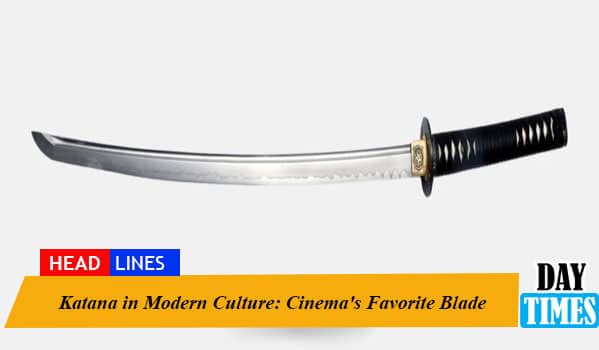The katana, with its gleaming blade and pronounced curve, is more than just a weapon—it’s a symbol of honor, discipline, and artistry. Its historical significance in Japan is unparalleled, revered not just as a weapon, but as an extension of the samurai’s soul. Fast forward to today, and the katana has found a new realm to conquer: modern cinema. Its intricate design, rich history, and potent symbolism make it a favorite prop in many Hollywood blockbusters.
The Symbolism of the Katana in Film
In the cinematic world, the katana is rarely just a sword. Its inclusion in a scene often brings with it undertones of honor, precision, and sometimes, defiance. For instance, in Quentin Tarantino’s “Kill Bill”, the katana becomes a representation of the protagonist’s journey, her discipline, and her quest for vengeance. Meanwhile, in films like “The Wolverine”, the blade underscores the cultural bridge between the East and West. Its presence immediately elevates the gravity of a scene, silently communicating themes of tradition and respect. Moreover, with the increasing popularity of the katana sword in the US, its appearance often resonates deeply with audiences, connecting them to a culture and history far removed from their own.
Iconic Movie Moments Featuring the Katana
From action-packed sequences to poignant moments of reflection, the katana has featured prominently in several iconic film scenes. Who can forget Uma Thurman wielding her Hattori Hanzo sword in “Kill Bill”, or the intense battles in “Blade”, where Wesley Snipes uses a katana to dispatch vampires? In “The Last Samurai”, Tom Cruise’s character, Algren, learns to respect and master the katana, symbolizing his deeper integration into Japanese culture. These scenes are etched in cinematic history, partly due to the katana’s visual and symbolic potency.
Hollywood’s Interpretation vs. Historical Accuracy
While Hollywood has embraced the katana, it’s essential to distinguish cinematic representation from historical accuracy. Many films take creative liberties with the blade, adjusting its use, form, or backstory to fit narrative requirements. For instance, while real samurai might have followed strict codes and rituals regarding their swords, movie characters often wield them without such adherence. This divergence is not necessarily a slight, but an acknowledgment of cinema’s primary goal: storytelling. However, for enthusiasts or those intrigued after watching a particularly stirring katana scene, a “real katana sale” might offer them a chance to own and appreciate the craftsmanship of an authentic or well-made replica blade.
Influence on Western Pop Culture
Beyond the confines of the cinema, the katana’s impact on Western pop culture is evident. Its sleek design has influenced fashion, with katana-inspired accessories and motifs appearing in clothing lines. Video games like “Ghost of Tsushima” or “Sekiro: Shadows Die Twice” place the katana at the heart of the gameplay, drawing players into immersive samurai narratives. Even comic book characters, like Marvel’s Elektra, are often depicted with katanas, further embedding the blade into the pop culture psyche. With the West’s growing interest, events like a “real katana sale” or exhibitions often attract large crowds, eager to own a piece of this cultural marvel or simply to learn more.
The katana’s journey from the ancient battlegrounds of Japan to the gleaming screens of global cinema is a testament to its enduring allure. Its blend of beauty, history, and symbolism makes it a captivating element, both in film and broader culture. As the line between the East and West continues to blur, especially with the rising prominence of the katana sword in the US, it’s clear that this iconic blade will continue to inspire, enchant, and connect diverse audiences for generations to come.





